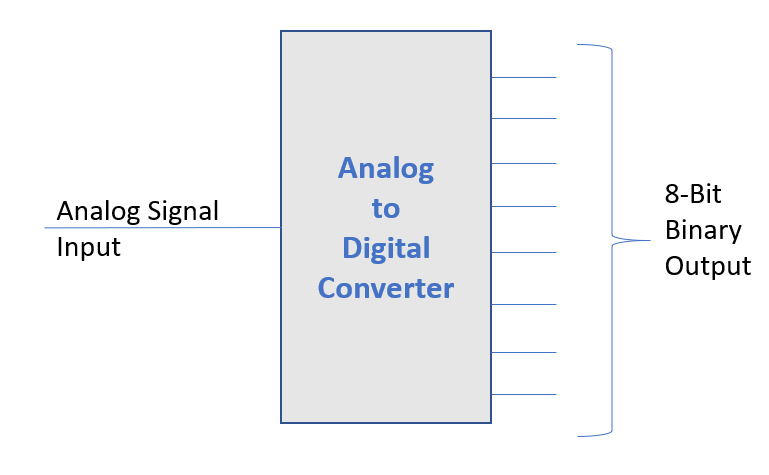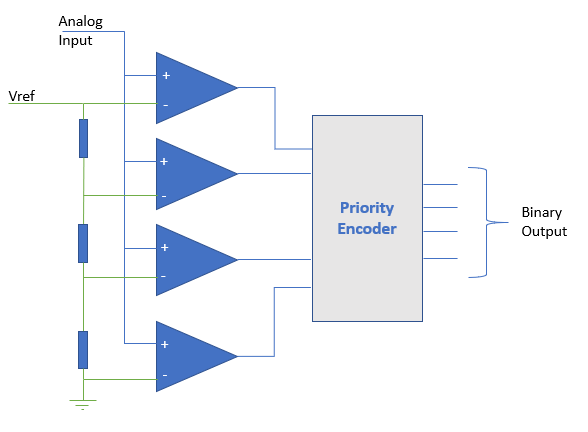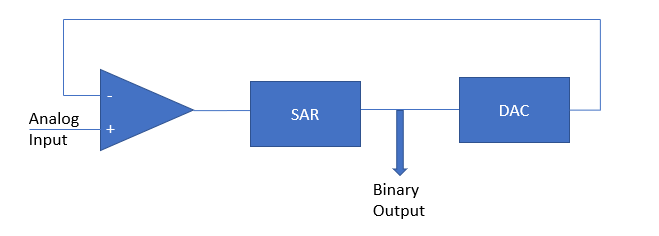This website uses cookies so that we can provide you with the best user experience possible. Cookie information is stored in your browser and performs functions such as recognising you when you return to our website and helping our team to understand which sections of the website you find most interesting and useful.
How to Choose an Analog to Digital Converter
10/04/2020, hardwarebee
When it comes to the world of modern technology, digital rules. There are several reasons why digital devices and processing is significantly preferred over analog, including the fact that it is much more accurate and compatible with computer-based processing. In certain applications, however, it may be necessary to add an analog component to the system to make it work. This is true for devices such as sensors whose conditioning circuits bring in an analog signal. In order to turn this analog signal into a digital one, you would require an analog to digital converter or an ADC. ADCs are complex circuits that help connect the analog and digital domains of your device.
Selecting the Right Analog to Digital Converter
An analog to digital converter will have a great impact on the overall performance of your system. While there is great variety in types and qualities of analog to digital converters available in the market, it can be challenging to choose the best one for your application.
Therefore, the process of selecting the best ADC for your system can prove to be a confusing and time consuming one, and ultimately reap no results if you do not know what to look for. To streamline this task and make the right decision for your electronic gadget, we will walk you through a series of criteria and questions that you should consider before making your final decision.
Types of Analog to Digital Converters
To begin with, you need to be aware of the different types of analog to digital converters that you will find in the market. Each type has its own set of advantages and disadvantages, making certain converters more suitable for certain applications and not others.
Flash
As suggested by the name, flash type ADCs are super fast and are great if you prioritize speed for your conversion. This will, however, compromise the resolution of the output signal. They are frequently used to convert analog videos to digital.
SAR
A Successive Approximation Register prioritizes accuracy over speed which is why its application is frequently seen for data acquisition purposes.
Delta-Sigma
One of the latest types of converters, delta-sigma types are extremely accurate and give high quality results. But this comes at the expense of speed. They are used in applications where fine details are important to capture, such as for high fidelity video and audio conversion.
Pipelined
Pipelined converters give you the best of both worlds by combining the features of flash and SAR type analog to digital converters. They give you both good speed as well as high resolution for your output.
How to Prepare yourself to the Selection Process
Before you hit the market and start looking through your options, you need to determine the prerequisites. These are some questions that you need to ask yourself and then answer as they will help further guide you and narrow down your search.
- What kind of analog signal are you using as your input?
- Do you have a minimum requirement for the resolution of the results?
- Do you need to maintain the level of accuracy above a certain threshold?
- Does your device need to be of a certain speed or above?
- Are there any physical characteristics it needs to withstand the environment?
- How many channels are you using in your circuit?
- What about the circuit timing?
- What about cost? Size? Power consumption?
Asking yourself these questions helps you realize what your exact requirements are and gives you a rough idea of the features you need your analog to digital converter to have.
Selection Criteria for the Ideal Analog to Digital Converter
When it comes to establishing the criteria for choosing your analog to digital converter, noise, speed, resolution, and accuracy are four of the most critical parameters.
Speed
The speed of the converter refers to the sampling rate of your device- more specifically, how much time it takes for the conversion of one analog signal into a digital output. It is usually expressed in the form of samples per second. When browsing through the available analog to digital converters, check the highest number of conversions per second it can run. This gives you an idea of how many conversions it can perform per second.
Resolution
Resolution is basically how many output bits can be generated by the converter per each conversion. This determines what the smallest signal your system can accept as input as well as the smallest incremental change in can express in the analog signal.
Noise
Quantization noise is interference from the circuitry that often interferes with the signal conversion and transmission and results in some degree of loss which can be observed in the output signal. While noise is unavoidable in all systems, you can overcome it from a functional point of view by increasing the resolution. That is why a higher resolution can increase the accuracy of the converter.
Accuracy
Accuracy can be described as how close does the converter come to giving as good of a resolution as it should in theory. Accuracy can be disrupted by a number of factors such as quantization noise and other nonlinearities that may arise during the transfer. But you need to determine how much of the output signal is what is desired and how much of it is noise. This is represented through the SNR or the signal to noise ratio. A higher SNR ratio means there is more signal as compared to the noise, which is a good thing for your system.
Other variables include size, interface, number of channels, power consumption, and input voltage. These may not be as critical as the former, but they can help narrow down your options and settle on the best choice from a specific selection.














